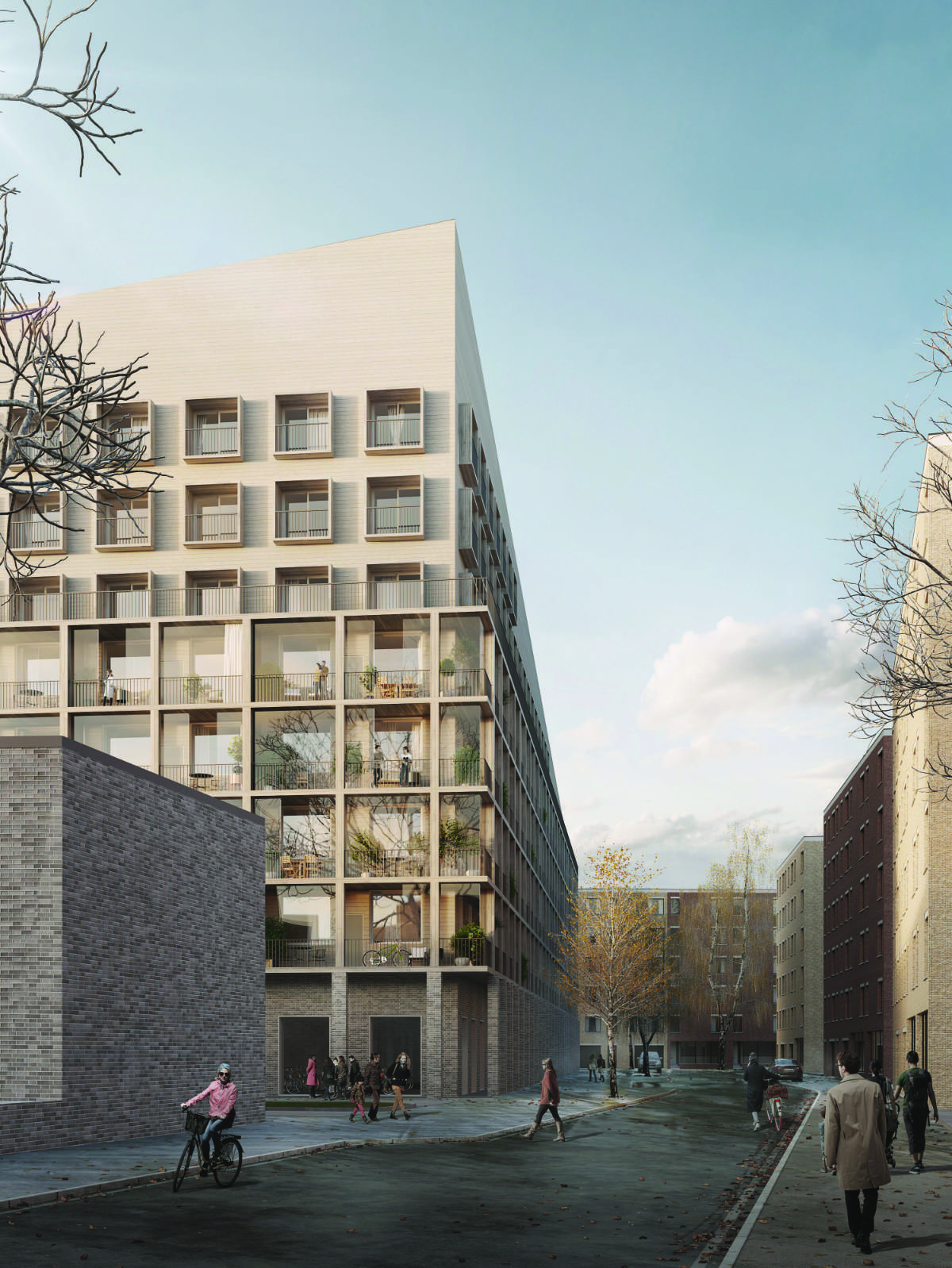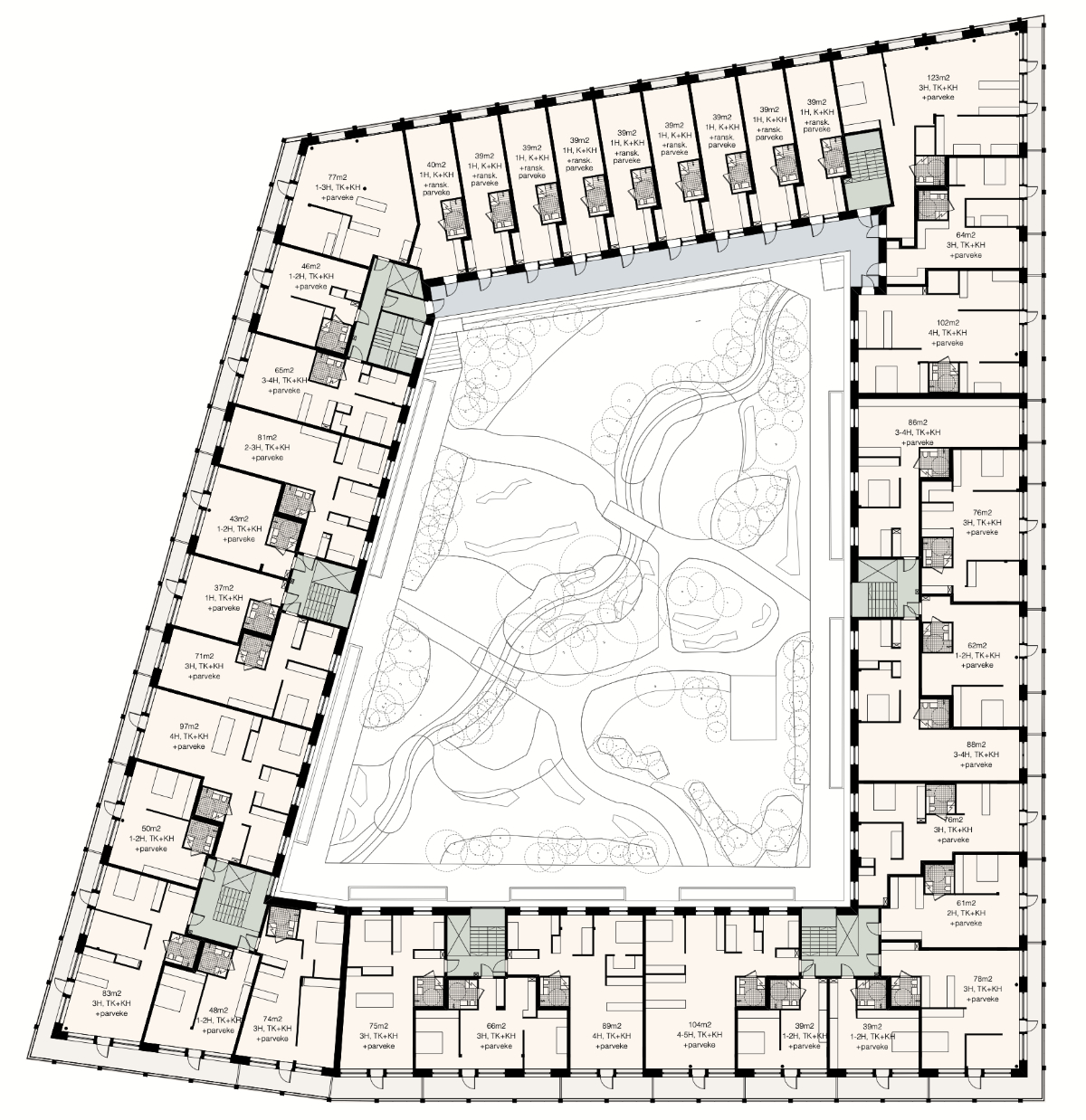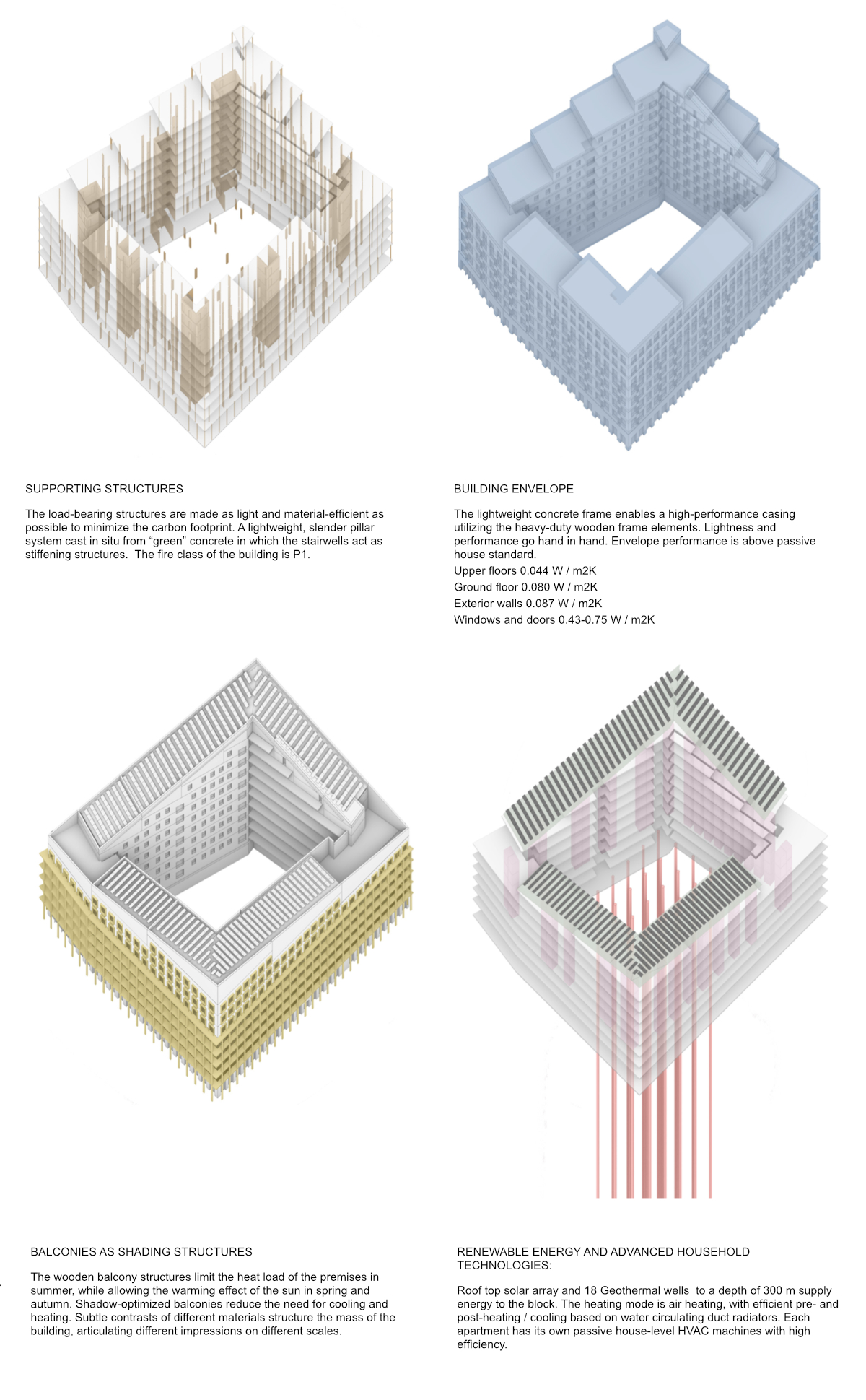NOLLA
Proposal for a Sustainable Housing Block
Helsinki, FI
LOW CARBON FOOTPRINT AND ENERGY EFFICIENCY
The key goal of the Helsinki City Strategy 2017–2021 is carbon neutrality by 2035. Building a low-carbon green block is a step on this path. The aim of this quality competition is to find and develop solutions that lead to energy efficiency and a reduction in the carbon footprint of construction. The carbon footprint has been reduced by significantly lightening the load-bearing frame and cladding of the building. The use of concrete and steel has been precisely targeted to load-bearing structures. The use of wood in the cladding as well as in complementary building components is used whenever it is physically and fire-wise sensible for the building. In order to reduce energy consumption, the insulation of the building envelope is super-passive throughout. Building services solutions - ventilation, borehole and heat recovery systems - are optimized for both performance and cost. The roof of the building has both solar collectors that produce hot water for the property, as well as solar panels whose output covers a significant part of the property's electricity needs when the sun is shining. In addition to these, housing companies build and manage a separate so-called an off-site solar power plant with an annual return equal to a block of purchased energy needs. In these solutions, the costs of achieving energy efficiency are part of the construction costs and enable the resident to have lower housing costs.
E-CHAPTER OF BUILDINGS AND INTERPRETATION OF REMOTE POWER PLANT IN E-READING
The weighted E-number of the building is 56 (see E-number report, section 5.0 Calculating the E-number). The calculation is based on current legislation and practice. Legislation is constantly being developed, for example, amendments to the decree approved by the Government on 22 December 2020, which will enter into force on 1 January 2021 (transition period 12 / 2020–6 / 2023). They enable the formation of a local energy community and provide for the credit calculation of electricity produced together and for the offsetting of consumption and production at the place of use of electricity in the settlement of electricity supplies.
According to the Ministry of the Environment, the municipal self-government opens up the possibility for the local building permit authority to interpret the current regulations so that, for example, a solar power plant that is not located on the actual construction site could be accepted as belonging to the property. The equipment of this “off-site” remote power plant and maintenance shall then belong to the property, and its location must be either owned by a block of condominiums, or leased to them under a long lease (e.g., 30 years). There is also a burden that can be created between the plots of the housing companies and the power plant's plots, by which the remote power plant and the use of its plots are specifically linked to serve these housing companies, even if its income is transferred to the consumption point via the grid. Within the framework of the energy community model, both local and remote production are calculated according to the credit calculation model on an hourly balance sheet basis.
If the Helsinki Building Authority approves this interpretation, energy companies and developers formed by housing companies will be able to make significant solar energy investments in Finland as part of the path leading to the Carbon Neutral Helsinki 2035 target. Together, the zero housing companies undertake to build, own and maintain a 5,700 m2 solar power plant in the Finnish grid, with an annual return that meets the block's external energy needs. With the current credit calculation model (hourly balance sheet settlement periods), this remote power plant reduces the e-chapter of the block to level 45 (see e-reading report, section 5.1 Calculation of off-site PV panels). If we look at the annual production of this remote power plant so that the grid acts as a storage (grid-as-storage, so that the balance sheet settlement period is a year), then the e-figure would be calculated to be zero.
The remote power plant concretizes the relationship between production and consumption. The Zero block of the energy yard will become the home of about 400 inhabitants, and each of them knows that about 15 m2 of the area of the cells of the remote power plant produces electricity equal to his annual consumption.
With NOW for Architecture and Urbanism
Client: SSA OY
Sustainability advisor: Kimmo Lylykangas
LCA analysis: Anni Oviir
Building Performance Simulation: Equa Finland




